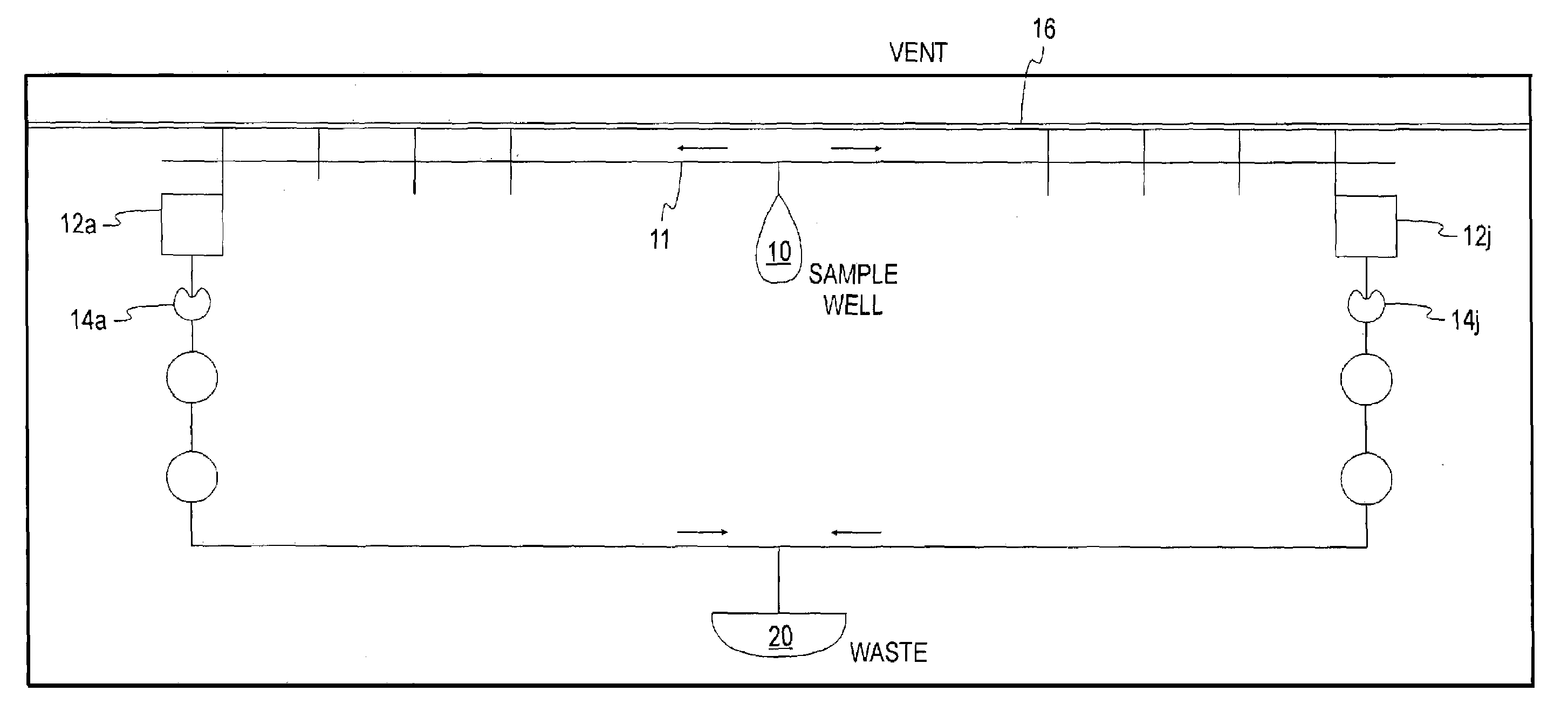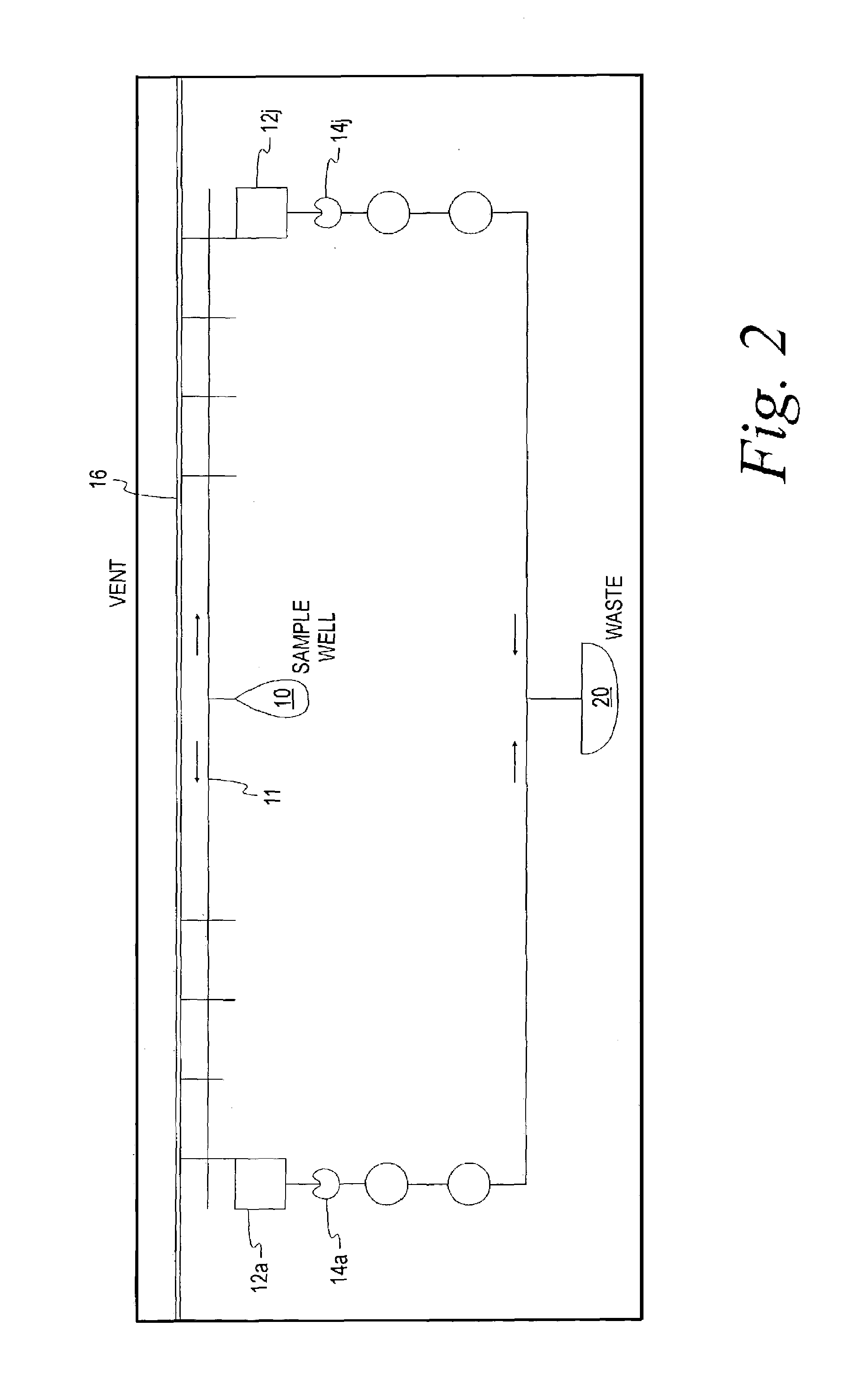Method and apparatus for splitting of specimens into multiple channels of a microfluidic device
a microfluidic device and specimen technology, applied in the field of microfluidics, can solve the problems of incompatibility of reagents with each other, difficult preparation of such devices, and inability to achieve desired reaction
- Summary
- Abstract
- Description
- Claims
- Application Information
AI Technical Summary
Benefits of technology
Problems solved by technology
Method used
Image
Examples
example 1
[0071]A multiple channel device was made in a plastic chip having an annular shape using diamond bit drills and lasers. Six reaction channels were arrayed on each side of a central inlet well in an arrangement similar to that of FIG. 2. The inlet well had a volume of 37 μL, each metering well and reaction well had a volume of 1 μL, and the waste well held 37 μL. The capillary passageways were 30 μm wide and 30 μm deep. All of the wells and capillary channels were made by hydrophilic by plasma activation or polymerization. Each of the wells was vented to allow air to escape as liquid fills the space. A hydrophilic capillary stop was added at the outlet of the metering well and the reaction wells to prevent flow through the connecting capillary passageways until sufficient centrifugal force is applied. A 20 μL sample of urine was placed in the inlet well from which it wicked into the capillaries 11 and then into the individual metering or reaction wells 12a–j by capillary forces. The ...
example 2
[0072]FIG. 12 illustrates an alternative configuration similar to FIG. 2 except that each of the metering wells 12a–f are used to supply a portion of their sample to each of five reaction wells e.g. 13a to 13f. From each of these reaction wells is metered five additional portions 14a–f (1–5) to each of five more reaction wells 15a–f (1–5). In one application, 12a meters 2 μL of the specimen into the 13a reaction area, which contains 10 μL of lysis buffer. A lithum salt in the lysis buffer, as described in U.S. Pat. No. 5,258,311 causes the red blood cells to lysis and allows antibodies to react with the glycated peptides of hemoglobin. Five additional aliquotes of 0.3 μL are metered by 14a (1–5) into separate reaction areas 15a (1–5) for detection of HbAlc by measurement of agglutination of immuno reagents, as described U.S. Pat. No. 5,372,918.
PUM
| Property | Measurement | Unit |
|---|---|---|
| depth | aaaaa | aaaaa |
| width | aaaaa | aaaaa |
| volume | aaaaa | aaaaa |
Abstract
Description
Claims
Application Information
 Login to View More
Login to View More - Generate Ideas
- Intellectual Property
- Life Sciences
- Materials
- Tech Scout
- Unparalleled Data Quality
- Higher Quality Content
- 60% Fewer Hallucinations
Browse by: Latest US Patents, China's latest patents, Technical Efficacy Thesaurus, Application Domain, Technology Topic, Popular Technical Reports.
© 2025 PatSnap. All rights reserved.Legal|Privacy policy|Modern Slavery Act Transparency Statement|Sitemap|About US| Contact US: help@patsnap.com



